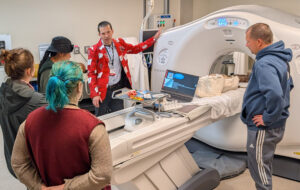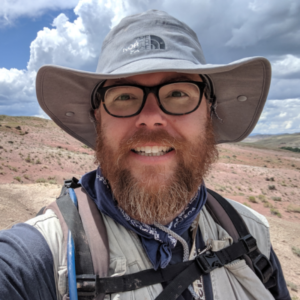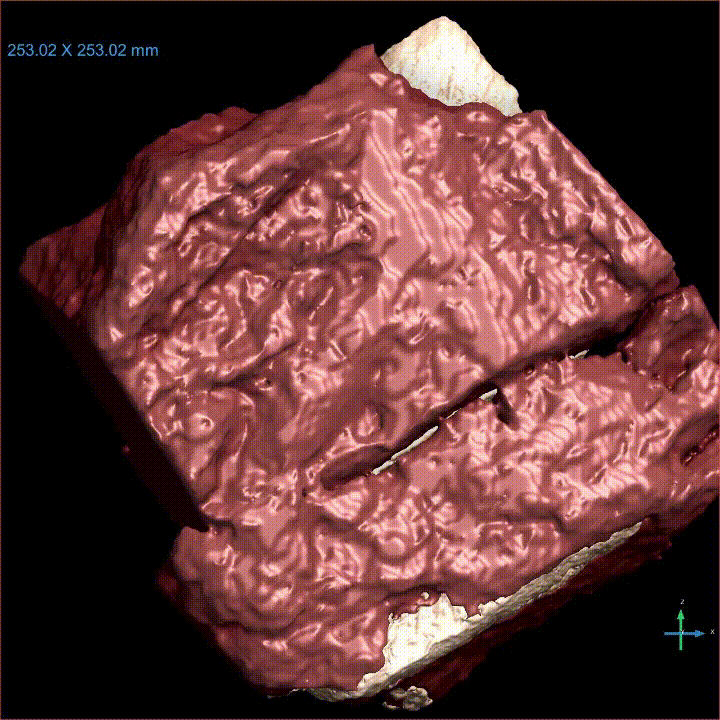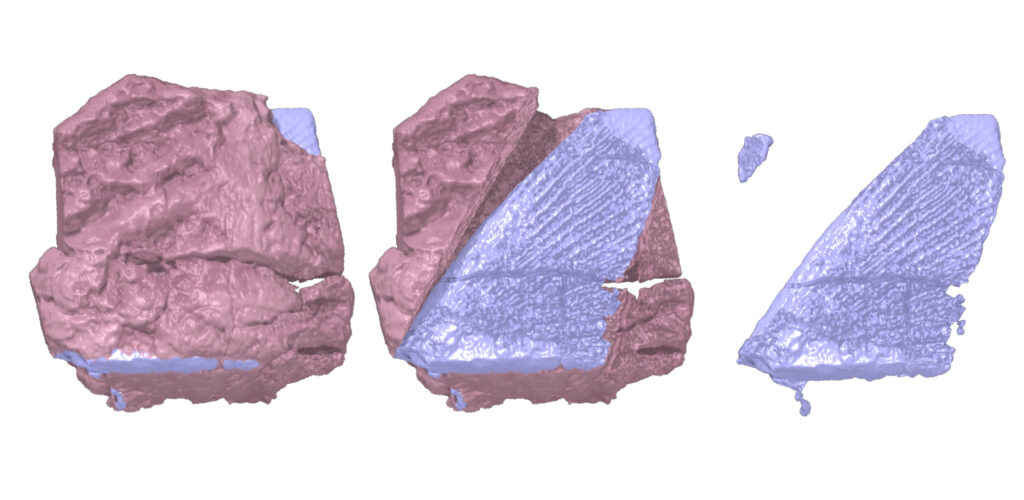
On Thursday, May 1, 2025, a group of high school students from Wyoming gathered around a CT scanner at the Wisconsin Institute for Medical Research (WIMR). Tim Szczykutowicz, PhD, from the Department of Radiology, operated the equipment to scan a rock from the students’ home on the Wind River Reservation. In a few moments, they would see a fossilized ancient creature that once roamed their homeland millions of years ago.
The students’ visit was part of an ongoing partnership between the University of Wisconsin Geology Museum and the Wind River Reservation. The Geology Museum mentors students from the reservation in the science and methodologies of fossil preparation, care, and preservation. The mentorship program helps the Wind River Reservation build the capacity to prepare and curate an extensive fossil collection that is still in rock from their sovereign land.

In addition to leading the UW Geology Museum Prep Lab Mentoring program for Indigenous Youth, David Lovelace, PhD manages the Fossil Preparation Lab and the museum’s research programs. A vertebrate paleontologist, he conducts field research in a way that provides a whole-picture perspective of these artifacts from a scientific and cultural lens.
“We talk about the biology of the organisms. We walk them through the science,” said Dr. Lovelace. “But for the Eastern Shoshone Tribe, this is their ancestral land, and they have a deep connection to that area. They have a history, information and perspectives I’ll never have.”
The students mentored through the program work with their elders to learn about the links between the fossils and the Tribe’s history.
“There are animals that they have in their language and culture, and they are making these connections,” said Dr. Lovelace.
While the partnership between the Geology Museum and the Wind River Reservation is still in its early stages, Dr. Lovelace hopes to build longevity into the program and continue to build a positive relationship.
“We’re listening to the stories of the students, their elders and community,” said Dr. Lovelace. “We acknowledge their work and contributions by including them in the papers and posters of published research.”

The Geology Museum regularly partners with WIMR to conduct CT scans as part of preparing fossils. The scans allow Dr. Lovelace and his colleagues to see the fossil within the rock or matrix before they even lift a hammer and chisel. Knowing where to remove the rock provides a better chance of safely exposing the fossil with minimal damage. Using modern technology with CT imaging and incorporating the knowledge and perspectives of Indigenous peoples paves a new way to study and practice the science of paleontology.
“We’re learning other ways of doing this science, and how to expose these fossils in a good way,” said Dr. Lovelace.
In addition to Dr. Szczykutowicz, PET/CT Research Program Manager Marne VanderPas helped coordinate the visit. CT Instrumentation Technologist Melissa Hruska assisted Dr. Szczykutowicz with scanning the fossils and educating the students on the CT process.
